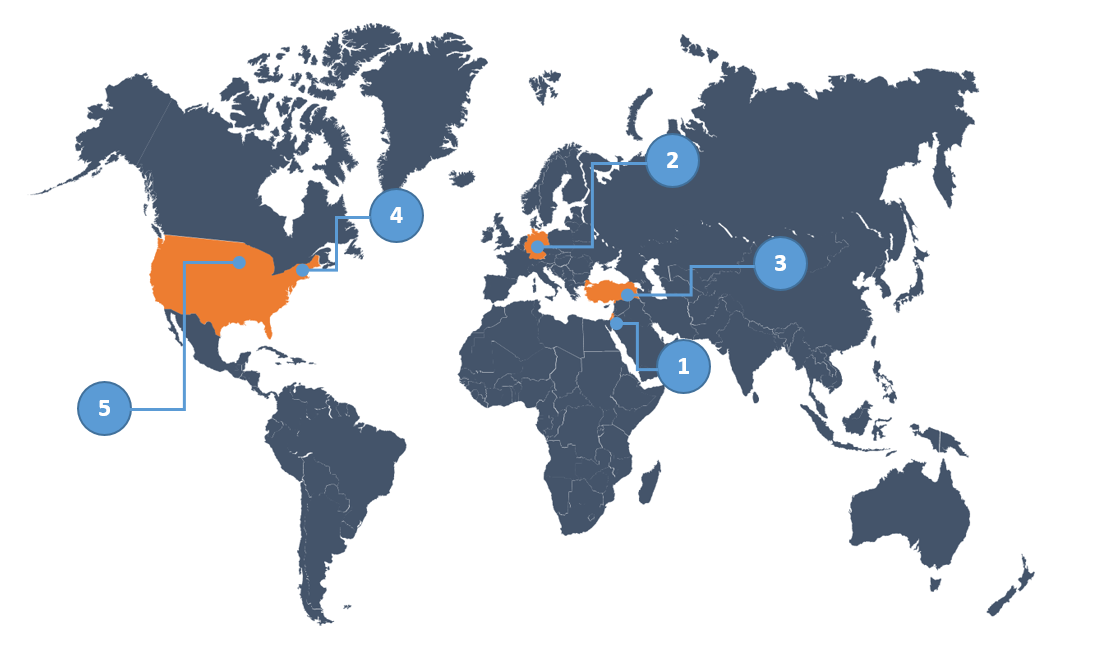Headline Assessment
- Terrorists have been using fire in attacks for decades. No special skill or training is required and the materials needed to produce fire are widely available.
- The likelihood of terrorists using fire in an attack will vary depending on ideology. In the UK, such an attack is more likely to be perpetrated by Extreme Right-Wing (ERW) Terrorists.
- Over the last five years, attacks planned or carried out using only fire have been confined to those with an ERW ideology, although the tactic has been used by Anarchists and Animal Rights activists in the past.
How and why do terrorists use fire in attacks?
The deliberate setting of fires, to damage, destroy property or to target those within, is not a new phenomenon and has been used by armies, criminals and others for centuries. Likewise, terrorists have been using fire in attacks (colloquially known as ‘Fire as a Weapon’ (FAW) for decades. No special skill or training is required and the materials needed to produce fire are widely available. Fire is one of several simple methodologies promoted by terrorist groups in recent years that can be used alongside other methodologies, or as an alternative to more sophisticated methodologies.
Terrorists can use fire in attacks in a number of different ways:
Arson – primarily considered a crime against property in the UK, arson for example, has previously been used by animal rights activists to target laboratories and premises perceived to be engaged in experiments involving animals. As these attacks were likely planned to avoid casualties, they would not now reach the threshold for terrorism.
Pyro-terrorism – a term derived from the Greek word for fire to describe the use of incendiary attacks to intimidate or coerce a government, the civilian population, or any segment thereof, to advance political or social objectives. This can range from large-scale attacks using fire such as the deliberate setting of wild and forest fires, to attacks using incendiary devices in so-called ‘letter bombs’.
Fire as a Weapon - refers to the deliberate use of fire against people to cause injury (as opposed to arson which targets buildings, infrastructure or property), usually as part of a complex marauding terrorist attack (MTA), but also used on its own.
Does this differ between ideologies?
The likelihood of terrorists using fire in an attack will vary depending on ideology. In the UK, such an attack is more likely to be perpetrated by Extreme Right-Wing Terrorists (ERWT), who are likely to view buildings associated with specific communities, such as mosques, synagogues and immigration centres, as credible targets. Despite propaganda from Islamist Terrorist groups advocating the use of fire in attacks against the West, Islamist Terrorists in the UK are less likely to favour this tactic.
Additionally, for some terrorist ideologies, fire can have symbolic meaning. These cultural, historical, spiritual, or religious connotations may influence whether, and how, fire is used by terrorists of differing ideologies in propaganda and in practice. Specific fire-related imagery or beliefs are unlikely to be directly indicative of extremism. However, extremists appropriate and share images and symbols which exist within wider, non-extremist cultures.
When have terrorists used fire in attacks?
There are a number of recent examples of when terrorists have used fire in attacks around the world. These include:

| In August 2021, terrorists in Gaza launched balloon-borne incendiary devices into southern Israel causing several fires. This tactic has been used on previous occasions including in June 2018, when more than 450 fires were caused which burned at least 7,000 acres of land, resulting in over $2 million in economic loss. | |
| In May 2021, flammable liquids were used to set fire to a number energy cables which supplied the construction site of a new US electric vehicle factory near Berlin, Germany, causing 200 000 Euros of damage. A left-wing extremist group claimed responsibility, stating that the electric vehicle company ‘is neither green, ecological nor social’. | |
| In October 2020, forest fires broke out in multiple locations in Hatay province in southern Turkey. Responsibility for these fires was subsequently claimed by a group, linked to separatist terrorist group PKK. Whilst forest fires are not unusual in Turkey during the hot summers, similar outbreaks in 2021 are suspected to be arson attacks by the PKK. | |
| In April 2020, a White Supremacist was charged with attempted arson after trying to use petrol to start a fire at a Jewish assisted living centre in Massachusetts, in the United States. | |
| In January 2018, a student at St. Catherine University in St. Paul, Minnesota was charged with setting eight fires around campus in response to the destruction of schools in Iraq and Afghanistan. |
How does this manifest in the UK?
Over the last five years, attacks planned or carried out using only fire have been confined to those with an ERW ideology.
- In 2022, a 66-year old man fire-bombed an immigration processing centre in Dover, Kent, then took his own life. The attack, which caused minor injuries to two members of staff, is assessed to have been motivated by an extreme right-wing ideology.
- In 2019, a 24-year old white nationalist plotted to burn down a mosque in Fife Islamic Centre in Glenrothes, Scotland.
- In 2018, a white supremacist accidentally set himself on fire while attempting to burn down the Exeter Synagogue.
- In February 2018, a 31-year old ‘-sympathiser’ was sentenced to eight years imprisonment for threatening to attack mosques with petrol bombs in the wake of the Manchester Arena bombing.
Although there have been no such attacks motivated by an Islamist ideology, it is noteworthy that in at least one case the use of fire was planned for, but not actually used.
- After the London Bridge attack in June 2017, when three marauding Islamist terrorist killed eight and injured dozens more, the abandoned van used in the attack, was found to contain a stock of unused Molotov cocktails.
Whilst there have been no LASIT attacks in the UK using FAW in the past 5 years, the tactic has been used by Anarchists and Animal Rights activists in the past.
- In 2013, anarchists claimed responsibility for an arson attack against partially built police firearms training centre in Bristol.
- In 2014, a home-made incendiary device gutted the front and lobby of North Avon Magistrates’ Court. The attack was attributed to the so-called ‘Bristol Unabomber’ an anarchist who is believed to be responsible for a series of arson attacks in the south-west region.
Although these attacks are examples of politically-motivated violence, they would likely not meet the current threshold for terrorism.
What does this mean for business and the Public?
The impact of any future use of fire by terrorists in the UK will depend on whether fire is used as the sole method of attack or is used in concert with other methodologies. Nevertheless, as well as the obvious threat to life that fire can pose, it can also cause significant damage to buildings and infrastructure.
Additional guidance can be found in the Purple Guide but also in ‘Fire as a Weapon - Guidance on the mitigation of the risks’ published by the Centre for the Protection of National Infrastructure (CPNI) – now known as the National Protective Security Authority (NPSA).
Probability and Likelihood in Intelligence assessments
When describing threats in intelligence assessments, Counter Terrorism Policing utilises the Probabilistic Yardstick.
The Probabilistic Yardstick is a tool created by the Professional Head of Intelligence Analysis (PHIA), in the UK government, to standardise the way in which we describe probability in intelligence assessments. For example, if we use the term ‘likely’ what we mean is ‘a 55-75% chance’.
Use the scale below as a reference when reading ProtectUK Insights.


